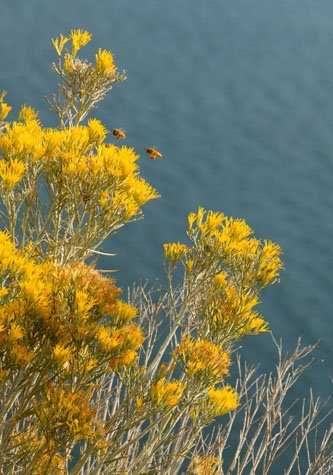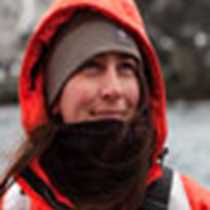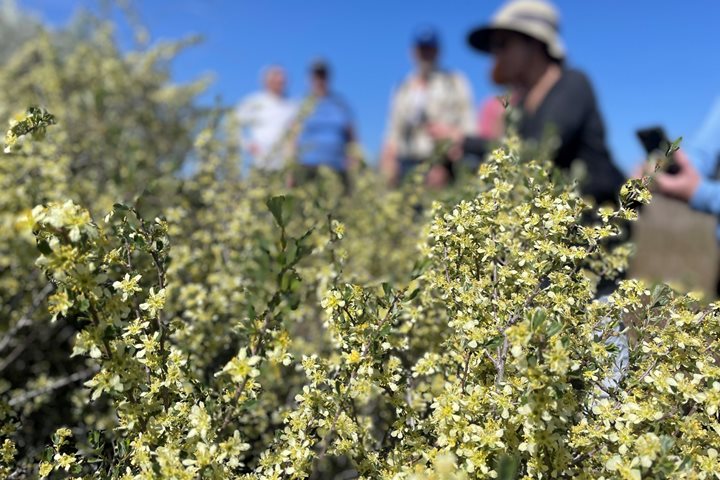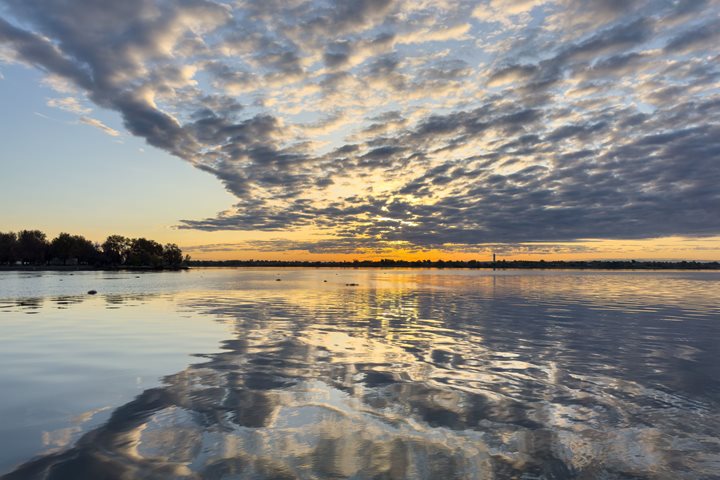Confluences. Contrasts. Connections. Conflicts. These were the themes that informed our day as we experienced the wealth of diversity here at the eastern cusp of the spectacular Columbia River Gorge.
We began the day at the Discovery Center in The Dalles, a magnificent museum introducing us to the contrasting biospheres of the arid region we’re now leaving and preparing us for the rain forest lands that lie just ahead. The Center features the region’s geologic origins, mega fauna, variety of Native cultures, and the impact of 19th-century interlopers spearheaded by the Corps of Discovery and the pioneers of the Oregon Trail.
Some of us then chose an aerobic hike or mountain bike ride to the National Geographic Sea Lion, while others began a walking tour of local historic sites. We began our tour at Rock Fort Camp where Lewis and Clark sheltered for three nights on both their westward journey in the spring of 1805 and their eastward journey the following autumn. The accompanying Nez Perce guides warned the Corps of danger ahead as they entered the homeland of the Sahaptian-speaking peoples. It turns out the fears of immediate conflict were unfounded. Our walking tour concluded with an interpretive survey of the historic murals in The Dalles city center. Two of the murals illustrated well the conflicts that eventually came to this region as half-a-million interlopers entered the Pacific Northwest via the Oregon Trail—one mural was filled with images of flourishing Native fisher folks, while the other was peopled with newly arriving over-landers displacing the indigenous people.
After a festive picnic lunch aboard ship, we crossed over to the Washington side of the Columbia. First up was a stop at a Stonehenge replica, the nation’s first memorial to the conflict once known as The Great War. We chose to commemorate the centennial of that horrendous conflict by honoring the memory of the millions of young men who lost their lives in battle. “What passing-bell for these who die as cattle?” asked British war poet Wilfred Owen. “Only the monstrous anger of the guns.”
A highlight of the day was our visit to nearby Maryhill Museum of Art, founded by eccentric entrepreneur Sam Hill in the 1920s, a truly eclectic collection intended to bring together the high culture of European civilization and the material culture of the Northwest Native people. Within a few steps of one another are Rodin sculptures and stunning Indian basketry—separated by a display of chess sets from Indonesia and Persia!
We ended our day with Recaps featuring staff photo instructor Emily’s tips on composition, pointing us in the direction of adding dramatic contrasts to our snapshots. We then mused a bit about the vagaries of inheritance in which ancestors as diverse as Welshmen and Choctaw Indians might be joined in a single descendant today, an embodiment of the mythical “Welsh Indian.” Staff naturalist David added a delightful punctuation to our themes of the day, entertaining us with a presentation on the varieties of Pacific Northwest Native Art and Culture.









